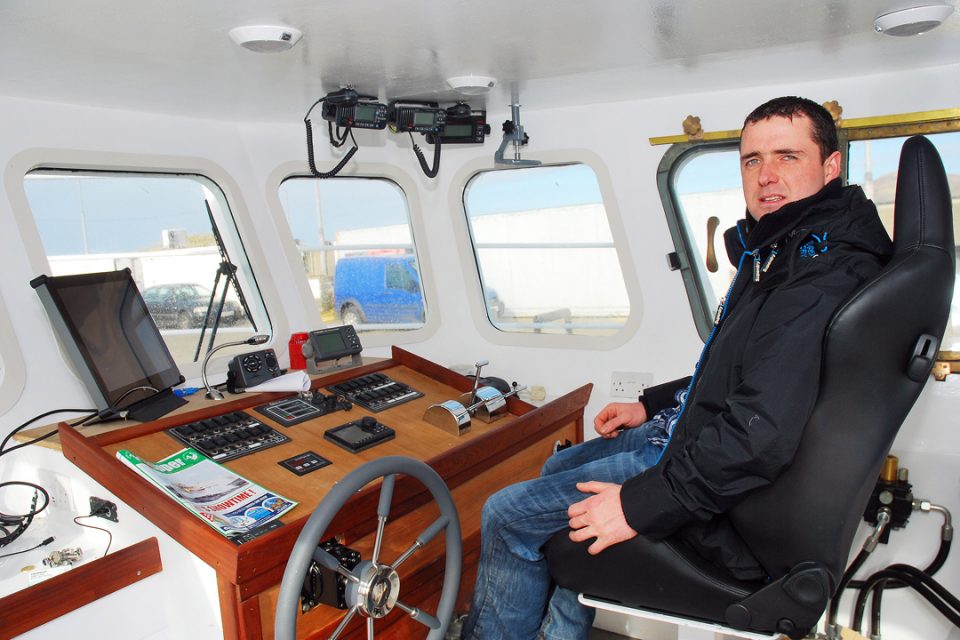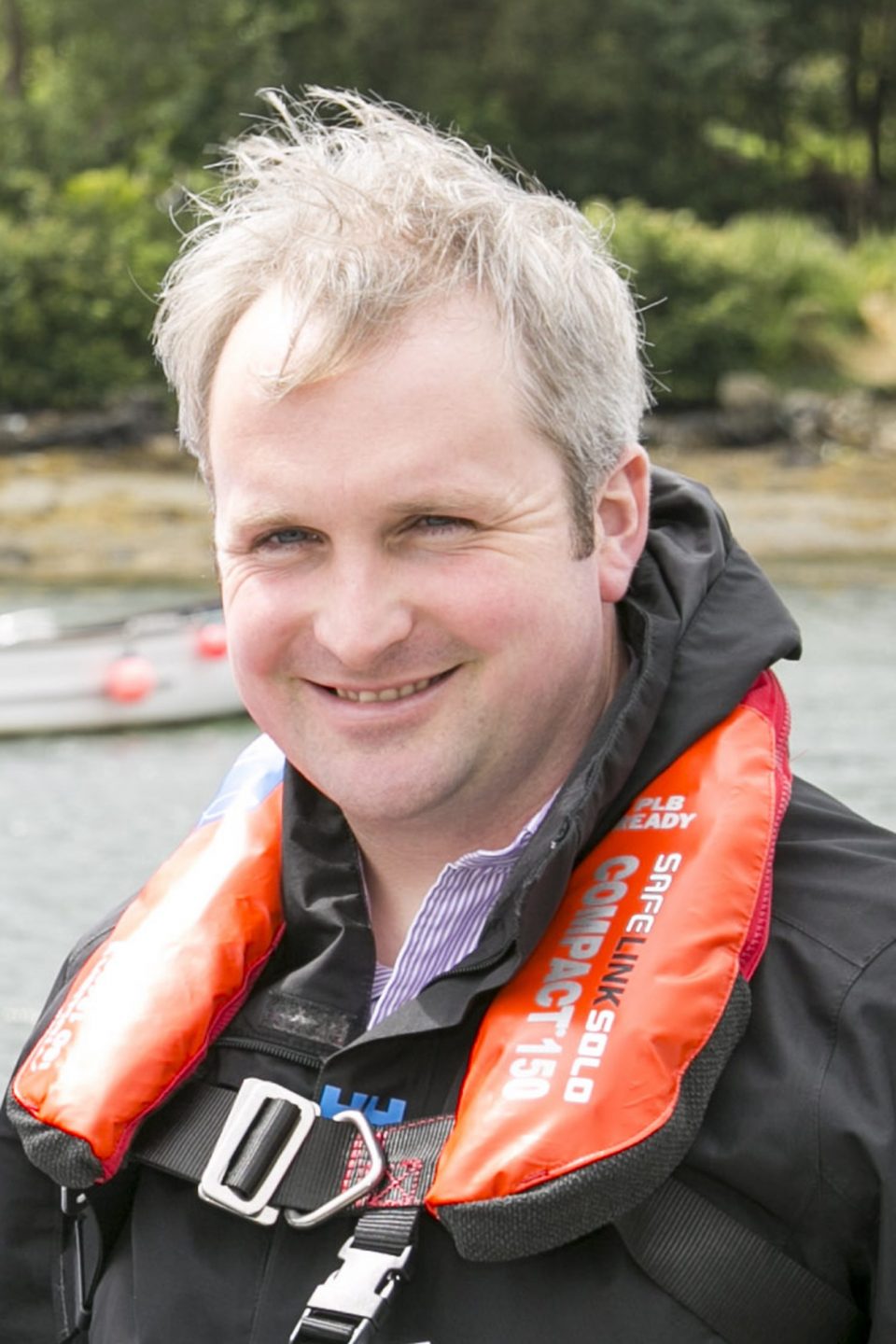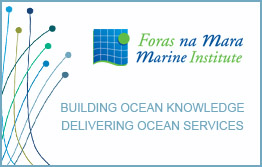By: Lorna Siggins
When the row erupted last month over several Norwegian vessels landing into Killybegs, the irony was not lost on the Mayo inshore fleet.
While the authorities permitted the 62.6 metre Havsnurp and the 87.8 metre Slaatteroey to land fish bought by a Donegal processor, any Irish inshore vessel offering much smaller catches could have risked detention.
However, the National Inshore Fishermen’s Association (NIFA) says it wouldn’t blame Norway, which, as an independent coastal state, is entitled to set its own unilateral quota for fish, even if this is in conflict with international management of migratory stocks.
Nor would it blame any Irish processor for buying fish which the vessels could not sell in Norway or Iceland.
Nor would it even criticise the Government which closed Ireland’s small scale fishery for mackerel early this year.
“It’s an EU issue, but fair play to Norway for looking after its own fishing industry,”NIFA secretary Alex Crowley says.
Mayo skipper Jonathan O’Donnell, who was directly affected by the early hook and line mackerel closure, concurs.
“It’s a complex issue,”O’Donnell says.
“ Any vessel landing into a port generates business onshore, and factories need fish, ”he points out.
“Yes, Norway increased its mackerel quota, but ultimately the EU is to blame for any situation that arises out of that, ”O’Donnell says.
“We can understand the anger of the bigger pelagic vessels, which have lost substantial quota due to Brexit. They don’t want to give away any more fish to anyone, and rightly so, ”he says.
“At the same time, the hook and line mackerel fishery is a developing industry for the smaller boats, particularly in Mayo,and further down the coast and up to Donegal,” O’Donnell explains.
“ The 400 tonne quota set by the Government for us is not sufficient,” he says.
“ I have been told by a fisheries officer that there is no downside to this fishery for the inshore fleet, given the limited opportunities we have and the low impact it has,”O’Donnell says.
The early closure of the fishery on June 12th by the Department of Agriculture, Food and Marine was criticised at the time by NIFA, and by Sinn Féín and the Social Democrats.
It led Social Democrats TD Holly Cairns to call on Minister for Marine Charlie McConalogue to explain why over 98 per cent of Ireland’s overall quota of mackerel was allocated to 49 larger Irish vessels.
She questioned why less than a per cent was allocated to the inshore fleet of small boats which employed more people proportionately.
However, the department said that the 2021 fishery was closed by the minister when the Sea Fisheries Protection Authority (SFPA) “advised the department that the available quota had been caught and exceeded.”
The 400 tonne mackerel quota for the inshore fleet was originally set in 2010.
The department has described as “unexpected” the fact that this 400 tonne limit was exhausted early in 2020.
It says total landings for vessels under 15m had been below 400 tonnes until then.
Irish South and West Fish Producers’ Organisation (IS&WFO) chief executive Patrick Murphy questions how the department could use the term “unexpected”.
He points to the fact that the trip limit of 500 kg of mackerel was increased to 750kg by the department.
Murphy said he warned the department that this move would lead to an early closure.
“I predicted it would put smaller vessels as a disadvantage,” Murphy said.
“Up until 2020, hook and line fishing for mackerel was a viable inshore fishery for everyone.”
“The department knew the fish were coming in numbers to Mayo, and they effectively created a targeted fishery,”Murphy says.
“ Changing the trip limit meant that one group of subsidised vessels ending up destroying the fishery for everyone else,”he says.
Not surprisingly, NIFA views it differently.
“For remote communities like north Mayo, it represented an opportunity, and a fishery with such a low impact, ”NIFA secretary Alex Crowley has said.
The rise in popularity of line-caught mackerel took pressure off shellfish stocks and at a time when the price of crab had dropped.
As NIFA points out, the growth of farmers’ markets has opened up new domestic opportunities to sell the highly prized migratory fish – which is in demand worldwide because of its rich oil content.
“The way we see it, Republic of Ireland Inc is benefiting from this resource, and it is up to Republic of Ireland Inc to divide it out in a manner which makes for greater socio-economic benefit,” Crowley says.
NIFA is seeking a policy review of mackerel management, but has not formally requested this yet.
NIFA has not yet disclosed the size of the increase it is proposing, but says that even if it was several thousand tonnes for the small boats, it would still be “less than five per cent of the national mackerel quota”.
O’Donnell and members of the Erris Inshore Fishermen’s Association travelled to the national fishing industry protest in Dublin during the summer to try and highlight the issue – but to no avail.
They focused on the low environmental impact of their fishery, arguing there is no risk of a by-catch of dolphins and turtles and other marine mammals.
The department’s response was that the minister must be “satisfied that that there is satisfactory evidence of changed circumstances to justify a policy review”.
“Any such review would require an assessment and full public consultation,” the department said.
It said that any increase for the inshore fleet would require that it be “taken from others who are already facing significant cuts” under the EU-UK Trade and Co-operation Agreement (TCA).
“Others” being the Irish pelagic fleet, which lost 25 per cent of Ireland’s overall mackerel quota to Britain under the Brexit TCA.
In tandem with the early closure, Bord Iascaigh Mhara (BIM) has suspended grant aid to jigging machines, used in the inshore mackerel fishery, under the Sustainable Fisheries Scheme Part B.
The scheme, which supports sustainable on-board capital investment, was closed for a budgetary review in 2020.
When it was re-opened in July of this year, the grant-aid for jigging machines – an expensive piece of equipment – was not included.
BIM cites the reason for this decision being linked to preliminary Sea Fisheries Protection Agency landings’ data, which recorded over 1000 tonnes of mackerel landed in the fishery this year.
“This is more than twice the 400 tonne allocation for this fishery,” a BIM spokeswoman says.
“The decision to cease grant aiding jigging machines under the scheme may be reviewed in the future, but currently it remains in place, ”the BIM spokeswoman said.
Another complicating factor is the new data for north-east Atlantic mackerel, which found a significant decrease in the biomass.
The biomass has reduced by over 58 per cent – as in tonnage – and there has been a drop in individual fish of over 53 per cent, compared to 2020.
The annual international mackerel ecosystem survey was conducted by five vessels from four countries between June 30th and August 3rd in the north-east Atlantic.
It found that mackerel were most widespread in the central and northern Norwegian Sea and in the North Sea – a similar pattern to last year – but there were low densities and limited distribution in Icelandic waters.
Mackerel biomass in the North Sea almost doubled this year compared to 2020, and surface temperature measures showed the North Sea was between one and two degrees Celsius warmer than the long-term average.
The survey found an overlapping distribution in mackerel and herring, particularly in large parts of the North Sea and in the southern Norwegian Sea.
Former BIM gear technologist Dr Peter Tyndall says that he is hearing all sides of the debate in relation to management of the mackerel fishery, and can understand each.
“There would be no mackerel fishery if a handful of pioneers decades ago had not taken risks and developed the fishery, and now everyone from polyvalent boats to vessels with jigging machines wants to get involved,”Dr Tyndall says.
“We are hearing of plenty of fish out there, such as off the Clare coast, and it is terrible then when there is no access for the inshore fleet – especially when there is such a market demand for hand-caught mackerel,”he says.
“The Norwegians have helped themselves to a few more thousand tonnes for what has become an unregulated fishery, and I do believe that should be closed out,”he says.
“However, I don’t blame factories for buying the fish from Norwegian vessels either, and it is up to the EU, and to Ireland as a member, to show more backbone,”Dr Tyndall says.
“It is so complex that you could not take sides,”he adds
”It boils down to one issue , as in the weakness of our own government in ensuring there is an adequate resource for the fleet, and the failure of the EU to ensure there is proper management and fair access for all…”




Recent Comments